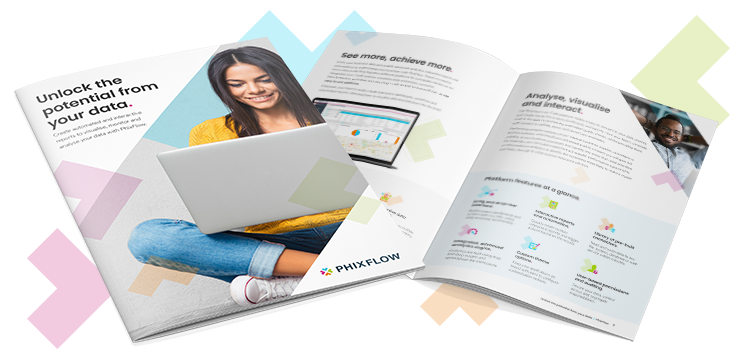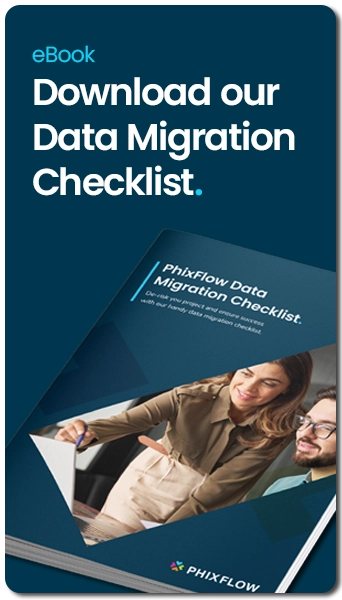How to unlock the hidden potential from your data with Low-Code
Low-Code/No-Code data analytics applications may hold the answer for companies wanting to unlock the potential from the vast amounts of data they hold. Identifying customer behaviours and buying patterns early drives future success through informed, data-driven, decisions.
“Data is the new oil”. A phrase coined by the British mathematician and entrepreneur Clive Humby back in 2006. He added, “It’s valuable, but if unrefined it cannot really be used. It has to be changed into gas, plastic, chemicals, etc., to create a valuable entity that drives profitable activity; so, must data be broken down, analysed for it to have value”.
These days, most businesses have access to more data than ever before. Data on customers, data on suppliers – the list is endless and even the smallest companies have more data than they realise. Having such large amounts data is one thing, but the data itself isn’t that valuable in its raw form, it needs refining, and that’s if you know how to access it.
Let’s take a look at how Low-Code platforms provide business users with all of the tools required to access, refine, analyse and report on key metrics.
Accessing data from multiple sources.
Most businesses will have multiple systems running across varies business functions. For example, a customer will have touchpoints with multiple areas of the business, each recording information in a different system. Sales teams will use a CRM, Customer Service will have a ticketing/helpdesk system and accounts will be using a finance package. By combining data from these systems, you will gain deeper insight into customer behaviour and make better informed decisions.
Connecting these systems presents a problem for many. Some may use SQL queries to try and extract the data, whilst others may be attempting to run multiple spreadsheets. Either way, both methods are time consuming and prone to error.
Low-Code platforms, like PhixFlow, offers the ability to use pre-built connectors or the option to create your own connections to import data into your Low-Code application. Once the data has been ingested, you can create custom dashboards, apply business rules or run analysis of your data.
Common Use Cases.
- Reducing customer churn
Customers come and go and identifying the customers that you need to focus your efforts on will pay dividends. For example, in the telecommunications industry many customers will shop around near the end of their contract. This presents the risk that they may leave and go to one a competitor. With all customer data in one place, using a custom Low-Code application built with PhixFlow, it’s easy to identify These customers. Which customers are coming up to the end of their contract? How much data they have consumed? How many times they have contacted support services and a record of their payment history. Additional information may be available too, such as gender, age, location. Using this information allows businesses to match the right plan to a customer and provide the sales team with a toolkit that allows them to proactively target the customers that are most likely to leave and improve customer retention. - Identifying product or service improvements
There’s always room for improvement, right? Nobody is perfect, and neither is any business. Identifying weak points are essential to make improvements that improve customer service levels and customer satisfaction. For example, having access to information on lost customers, combined with records from a customer care or support ticket system, will allow early identification of the pain points for a customer. - Improve profitability
As companies grow, so too does the number of products and services that they offer. Many products will have a natural lifecycle, and, over time, older products will account for less of the profit that is made. Product analysis is a great way to measure each product’s contribution to the overall profitability of the business. Once you have the results, sales and marketing team’s efforts are concentrated in the right area enabling customer service representatives to gain commission on upselling existing customers to a more profitable product or service.
Download our free guide and unlock the potential from your data
Data Potential Download
Form to pass details to Force 24 and re-direct to the Landing Page

Develop your own solutions in-house with Low-Code
Anyone can create great business applications that add value with PhixFlow. There’s no need to hire expensive developers, or to place extra pressure on the IT department. Instead, you can utilise Citizen developers – the non-IT users already within your business.
All the tools needed are readily available within a drag and drop interface. This allows the connection of data sources, analysis and enrichment of data, form and screen building and the automation of business processes.
It’s not just citizen developers that will benefit from the use of Low-Code. This enables experienced developers to gain too. It’s quick and easy to create initial application designs and proof of concepts. Additional calculations and business logic can easily be added when you need to extend the application.
Summary
The best thing is that you already have the main ingredient already sitting there for you – your data. All you need is to extract the data from the business systems and make it available in a simple to use PhixFlow application. After that, you can automatically perform complex analytics and provide the insights required to keep you one step of your competitors.
